Author Archives:Lydia Sampson
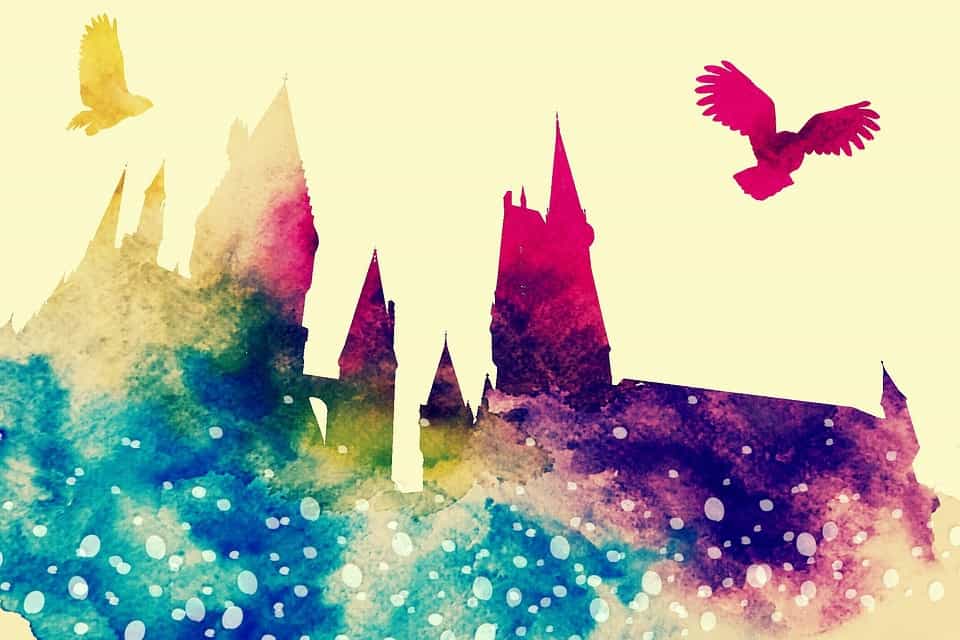
14
JunDiving Into a Book
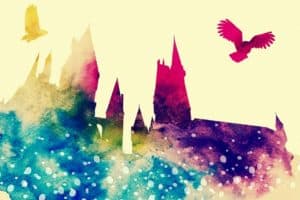 We all love to find a book that we can dive into. If that book changes our outlook or carries us away to a whole new world, all the better.
We all love to find a book that we can dive into. If that book changes our outlook or carries us away to a whole new world, all the better.
“If I Could Dive Into the World of Any Book” was the very topic of our essay contest this year for the younger participants. Thanks to the Andrew and Ernest Boch Memorial Fund, the Outreach department ran this event for the 7th year in a row. Not surprisingly, the books chosen and the worlds disclosed were as varied as our own town’s population.
Before going any further, however, this might be a good place to announce the names of our essay contest winners:
Level 1: Sylvie Deeks (First Place), Jordan Shea (Second Place), Reegan Pritchard (Third Place), Daniel Gomez (Honorable Mention), Bridget Kidd (Honorable Mention), and Caden Sheehan (Honorable Mention)
Level 2: Bridget Stenstrom (First Place), Thomas Nee (Second Place), Emilia Org (Third Place), Charlotte Martino (Honorable Mention) and Mary Flaherty (Honorable Mention)
Level 3: Alyssa Lahaise (First Place), Aanchal Nigam (Second Place), Jonathan Dana (Third Place), Joseph Gallant (Honorable Mention) and Paul Weinbaum (Honorable Mention)
If you are looking for some good Summer Reads, the books mentioned in these winning essays might be just the thing. And, if you haven’t discovered the Harry Potter series by J. K. Rowling yet, Sylvie Deeks would ask “What are you waiting for?” After all, who wouldn’t want to learn how to perform the “Wingardium Leviosa” spell used by Hermione Granger in order to make things float? As Deeks wrote, “Imagine being able to make the boys in my class float up in the air after they tease me!” That would certainly come in handy. Likewise, Bridget Kidd followed suit and chose to enter Harry Potter’s world as well. She had her own reasons, though, like trying out the game of Quidditch and the many different foods that Hogwarts offered.
Bridget Stenstrom and Jordan Shea both took a more empathetic view. They both chose the book Wonder, by R. J. Palacio to write about because they wanted to befriend the main character, Auggie, who was born with facial differences and who underwent 27 surgeries in his 10 years. In a beautiful way, Shea concluded that “I would want to be friends with Auggie not because I have to but because I think he would be a nice friend.” Stenstrom declared that she “would want to see through his eyes how hard it is to live with kids making fun of him every day.”
Most likely there are a lot of Charlotte’s Web fans out there, too. Reegan Pritchard did a nice job of reminding readers why Charlotte and Wilbur’s friendship is a reason to dive into their world. They go to such lengths to help one another, and Pritchard felt she would be “lucky” to be part of their “amazing and awesome world.”
For a change, Caden Sheehan described a world of baseball in Honus and Me by Dan Dutman. Sheehan thought he might like to go “back in time …to watch Jonus Wagner play a baseball game at the position of shortstop and to see how good he really is.” And while it might be a stretch, Daniel Gomez wooed us into thinking that Dog Man by Dav Pilkey would be a world of great fun and hilarity. After all, there are secret labs and police stations and a gigantic vacuum that can suck up anything.
That said, Thomas Nee chose the book Hatchet by Gary Paulsen because he wanted to have a real-life survivalist adventure. When the character Brian Robeson’s plane crashes in the wilderness, he survives with the only tool he brought with him—his hatchet. He lives in the wilds of Canada for 54 days. Nee admires how Brian “stayed so calm and still” when he came in contact with a bear. After all he endured, Nee said he “felt like I was with him [Brian] the whole time.”
Of course, sometimes we want to fall into a book that is completely nonsensical. That was the case with Emilia Org’s choice. She picked The Giraffe and The Pelly and Me by Roald Dahl. Org would be happy to join the adventures of these characters so she could “build my dream house” that would have a candy factory on it. Yum! Likewise, Mary Flaherty picked a beloved and magical world from A Wrinkle in Time by Madeline L’Engle. For Flaherty, it was as much family love as the adventures. As she wrote: “Also I like when everyone ends up at the house and they are all so happy to be together with their whole family including their long lost father.”
On the other hand, Charlotte Martino picked a world that many of us would chose to avoid—that of The Hunger Games by Suzanne Collins. If she could be like Katniss, the main character who survives death and the Hunger Game arena, Martino said it “would be like a dream.” Martino admitted that the situation of being hunted “wouldn’t be the best,” but with Katniss by her side, this adventure might be worth it.
And while all that diving into book worlds is wonderful, the adult essays addressed another favorite topic, that of libraries. The prompt for this group was to “Write About Any Library—Real or Imaginary, Large or Small—and What It Means to You.” Most of our participants wrote about real libraries, but not Alyssa Lahaise. She imagined a tree, with “long, willowy branches” which “fan out around the bumpy trunk” right in the middle of her perfect library. Not to mention, floating platforms and high balconies overladen with “purple buds.”
Aanchal Nigam thought a “personal library could be someone’s very own paradise,” and many of us would agree, while Jonathan Dana creatively reminded his readers that libraries can be musical ones as well. As he penned, “Where most libraries comprise of books, my special library consists of over 1,500 CD’s.” And when the day seems troubling, a favorite song can be the perfect solution.
Leave it to Joseph Gallant to bring a pragmatic side to these library visions. He realized that his dream library “couldn’t exist in real-life because of strained and limited federal, state, and municipal budgets.” Don’t we know it! This contrasted with Paul Weinbaums’ real-life memory of his first library job in the American Museum of Natural History where he remembered “An English-born librarian hosted tea with pastries during our very proper Saturday breaks.” Sign us all up for that experience. We will be sure to order the scones and clotted cream.
All in all, we could not ask for a more fabulous array of essays that were submitted this year. We wish we could offer prizes to all who entered, but we had to select these few winners. We hope everyone will join us in listening to their words at the celebration on June 18th from 7-9. After all, you can never have too many books and libraries, can you?
Nancy Ling is the Outreach Librarian at the Morrill Memorial Library in Norwood, Massachusetts. Read Nancy’s column in the June 14th issue of the Norwood Transcript and Bulletin.

7
JunNavigating Retirement and the Social Security Maze
 Everyone who knows me, particularly my family, realizes how much I love my job. Ancient philosopher Confucius is attributed with saying something like this: “Choose a job that you love and you never work a day in your life.”
Everyone who knows me, particularly my family, realizes how much I love my job. Ancient philosopher Confucius is attributed with saying something like this: “Choose a job that you love and you never work a day in your life.”
Certainly, in my profession that is very true. Most librarians are insatiably curious about knowledge and they love to give that knowledge away. It makes us a strange breed of generous know-it-alls who live that passion 24 hours a day.
That said, there does come that time to retire from “work” and enjoy those Golden Years we have heard about. This year I reached the magical year of 66 when retirement seems more of a reality than it ever has.
The original Social Security Act of 1935 set the minimum age for receiving full retirement benefits at 65 with reduced benefits at age 62. In 1983, amendments to the Act phased in a gradual increase from 65 to 67. For those of us born before 1959, full retirement benefits start at 66 and for those born after 1960, the age is 67.
My peers seem to fall into two groups. There are those who have put off seriously thinking about retirement, often upping the age we think we will take the leap because we can’t quite wrap our heads around ending our work, let alone gainful employment. Then there are those who have been counting the days and hours until they are 55, 60 or 65.
I actually consider myself to be retiring for the second time. I was home for over two decades in my late twenties to late forties raising my children. While motherhood can be an all-consuming and exhausting “job,” I did have a lot of time for many of my pursuits (quilting, education, reading, travel, etc.) I often tell people that I came out of retirement to begin my career as a professional librarian.
It was only a few years ago when we hit 60 that Gerry and I sat down to think seriously about the issues related to retirement. We realized at that time that we knew nothing about Social Security or Medicare benefits… and still don’t know much. We’ve approached advisors at the Social Security offices in Norwood and learned that we needed to register for Medicare Part A on our 65th birthdays. I learned that I might begin collecting my benefits and investing them before retiring on a municipal pension. (Those of us who work for the towns and cities in Massachusetts do not contribute to Social Security, but many of us paid into the system and earned some benefits while working outside of municipalities in earlier years.)
And so, learning about the financial end of retirement is a confusing wealth of information. And while the Internet can answer many questions, it is helpful to have other experts guide us. That’s where your local library can help.
While I don’t intend to retire for four more years at age 70, Wes Moss tells the rest of you that You Can Retire Sooner Than You Think! Moss is a financial planner who claims that you don’t need to invest in lottery tickets (and win)… or wait until age 75 or more to have the money to retire. He’s got some suggestions that include paying down your mortgage and finding some wise income sources. Obviously it takes reading his book and putting his principles into practice to hit your own retirement sweet spot.
Marc Lichtenfeld has a similar approach in You Don’t Have to Drive an Uber in Retirement (2018). Some of his advice includes paying less for your medical care (engaging in “medical tourism”) and generating more income that you’ll need to put away and/or invest.
Emily Guy Birken writes for several personal finance sites, including her own column “Live Like a Mensch”. Her 2014 book, The 5 Years Before You Retire gives advice for those who have put off planning until their sixties. Birken claims that in just five years you can maximize your retirement funds by increasing your 401K contributions, changing your housing options, and enrolling in Medicare. Birken wants you to live comfortably in retirement.
The above-mentioned books are available at our library and in the Minuteman Library Network catalog. A digital book – one that you can download to your device(s) from OverDrive – is Jane Bryant Quinn’s How to Make Your Money Last: The Indispensable Retirement Guide. Everyone knows Ms. Quinn from CBS News broadcasts, Take Charge (PBS), Woman’s Day and Good Housekeeping. What you might not know about her is that she helped develop the Quicken Financial Planner software. Quinn advocates turning your retirement savings into a regular paycheck and shares the tricks of manipulating Social Security or your pension and the equity in your home, taking smart risks along the way.
Other books deal with Social Security conundrum that many of us avoid until we are forced to – just like our infrequent visits to the Registry of Motor Vehicles! Social Security Made Simple by Mike Piper (2017) is only 100 pages. He explains how benefits are calculated – your own and your spouse’s. If you are receiving a pension once you retire, it might make sense to invest your early Social Security checks rather than wait.
What would Social Security advice be without a book for Dummies? Jonathan Peterson’s latest edition was just published in 2018. Authors Philip Moeller and Laurence Kotlikoff have written a Get What’s Yours series that includes two books aimed at maxing out your benefits in retirement: Get What’s Yours for Medicare (Maximize Your Coverage, Minimize Your Costs) and an updated and revised version of Get What’s Yours (The Secrets to Maxing Out Your Social Security). Their philosophy is making sure you get all that you put in over your lifetime of work.
Various authors contributed to the Social Security Quickstart Guide and it’s available as a digital book on Hoopla!, the Library’s streaming and downloading service.
The Official Social Security Administration Answers to 100 Frequently Asked Questions About Retirement, edited by John Weber, was just published in 2018. While the book is not written or sanctioned by the Social Security Administration, editor Weber has included advice and information from thousands of pages of official Social Security publications. He writes that the Social Security Administration is an “incredibly complicated program with 2,728 core rules and 1000s of codicils,” and Americans are losing unclaimed benefits. This might be an excellent place for me to start as we begin navigating the maze of Social Security and our eventual retirement.
Charlotte Canelli is the Director of the Morrill Memorial Library in Norwood, Massachusetts. Read Charlotte’s column in the June 7, 2018 edition of the Norwood Transcript and Bulletin.
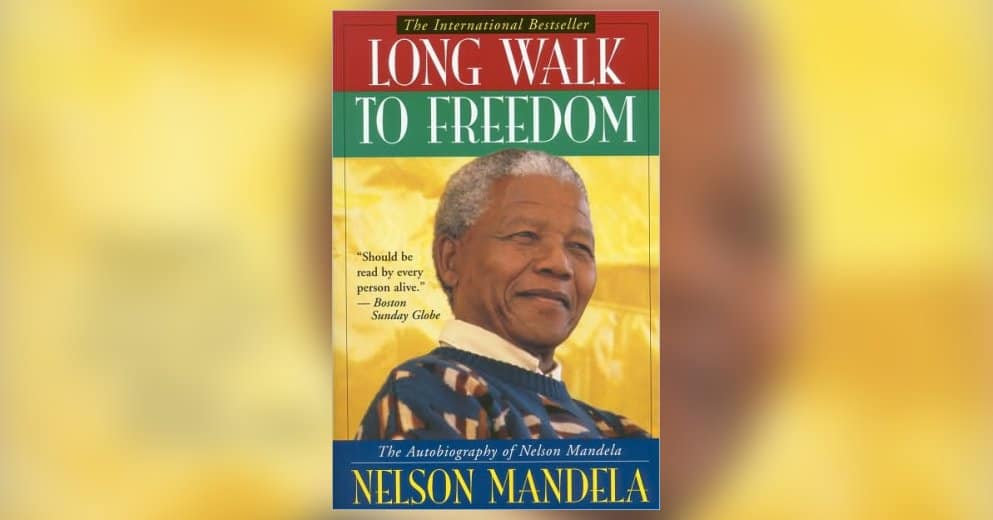
31
MayTrue Crime: War Crimes Edition
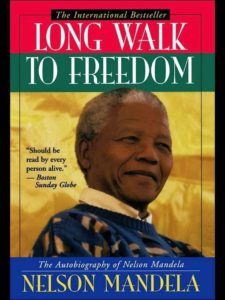 I already admitted to my true crime addiction in my May 3rd column/confession. The genre generally refers to murders, assaults, kidnappings and the stuff of Investigation Discovery programs. Although it’s hard to imagine worse crimes than these, victims throughout history have experienced such horrors on a grand scale: genocides, torture, ethnic cleansing. Grim as it may sound, my non-fiction leanings extend into the realm of some of the most disturbing events in modern history. A book that impacted me deeply, for example, bears the shockingly candid title, We Wish to Inform You That Tomorrow We Will Be Killed With Our Families: Stories From Rwanda, by Philip Gourevitch.
I already admitted to my true crime addiction in my May 3rd column/confession. The genre generally refers to murders, assaults, kidnappings and the stuff of Investigation Discovery programs. Although it’s hard to imagine worse crimes than these, victims throughout history have experienced such horrors on a grand scale: genocides, torture, ethnic cleansing. Grim as it may sound, my non-fiction leanings extend into the realm of some of the most disturbing events in modern history. A book that impacted me deeply, for example, bears the shockingly candid title, We Wish to Inform You That Tomorrow We Will Be Killed With Our Families: Stories From Rwanda, by Philip Gourevitch.
I learned about U.S. history and “Western Civ.” in school, with a cursory overview of “World History.” College taught me more about non-Western cultures, art and religion. As a working-class girl at a liberal arts college, I met people from all walks of life, and continued to do so after graduating, developing a passion for travel, and working at another liberal arts college for many years.
As my curiosity about history, global inequity, and other cultures increased, I read The Fear: Robert Mugabe and the Martyrdom of Zimbabwe, by Peter Godwin, and Sonia Nazario’s Enrique’s Journey, about a desperate Honduran child’s perilous experience riding the “train of death” on a quest to reunite with his mother. Tim Butcher’s Blood River: A Journey to Africa’s Broken Heart, broke my heart indeed, as did King Leopold’s Ghost, by Adam Hochschild, with their historical and modern accounts of the Congo.
Many people have read the classics, Anne Frank: The Diary of a Young Girl, and the graphic (non-fiction) novels Maus I and Maus II, bearing witness to accounts of Holocaust survivors. I recommend additional autobiographical books such as Nelson Mandela’s Long Walk to Freedom, or the film by the same name, I, Rigoberta Menchu: An Indian Woman in Guatemala, and Giaconda Belli’s The Country Under My Skin, her memoir of the Sandinista/Contra war and the revolution in Nicaragua.
I thoroughly enjoy movies that many consider total bummers as well. Holocaust movies Schindler’s List and The Pianist both won multiple Oscars. Hotel Rwanda, The Lives of Others, and The Last King of Scotland received awards and critical acclaim as well. I recommend a few lesser known titles: Welcome to Sarajevo, Beasts of No Nation, Walker, and the bizarre truth-is-stranger-than-fiction exemplar, General Idi Amin Dada: A Self Portrait. (The last is a documentary while the others are motion pictures inspired by true events.)
I gravitate toward material on certain countries and occurrences, but a quick search of the library catalog reveals no shortage of true-war-crime reading and viewing options focused on Asia, Australia, the former Soviet Union, and of course the United States too. Unfortunately, every inhabited part of the world has experienced tragedy and injustice.
I understand that many avid readers seek to escape everyday life, often with the help of Hobbits, aliens, or fictional characters embarking on adventures and falling in love. I have nothing against sci-fi, historical fiction, mysteries, or even the guilty-pleasure romance genre. Why then, do I become engrossed in morbid tales of man’s injustice to man?
Continuing education: After finishing my formal schooling, I made a commitment to lifelong learning. To converse about politics and history and avoid sounding like a jerk when traveling abroad, I want to learn some things beforehand. Regarding current events, I agree with the George Santayana quote, “Those who cannot remember the past are doomed to repeat it.”
Inspiration: While millions have perished in wars and genocides, some who survived have written their memoirs and documented atrocities. It amazes me that Nelson Mandela endured Apartheid and Robbin Island in South Africa. In spite of enormous struggles, Rigoberta Menchu became an activist and change agent. I admire Holocaust survivors for preserving the memory of those who met a different fate. True stories of heroes and people who overcame adversity inspire me to advocate for human rights and to persevere in my own times of trouble, which pale in comparison to what others have gone through.
Perspective: Like anyone else, I complain about mosquitoes, traffic, and long lines at the post office. Fortunately, I’ve never faced unjust imprisonment. Police have never turned dogs or hoses on me. My father immigrated to the U.S. as a war refugee, but in my lifetime no one has forced my family to flee our home or our country. True stories of terrible events remind me to practice empathy, express gratitude, and try not to take for granted how lucky I am.
Lydia Sampson is the Technical Services department head at the Morrill Memorial Library in Norwood, Massachusetts. Read Lydia’s column in the May 31, 2018 edition of the Norwood Transcript and Bulletin.
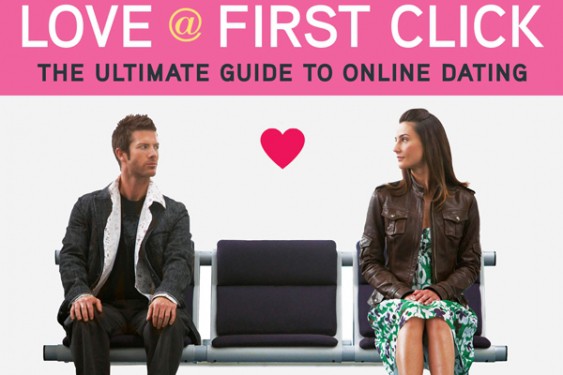
24
MayLove at First Click
 O Romeo, Romeo, wherefore art thou internet Romeo? Buckle in and hang on to your hats, folks, we’re about to take a ride through the exciting, data-driven world of online dating. If you don’t agree that something data-driven can be exciting, then we probably wouldn’t be a good match. Swipe left.
O Romeo, Romeo, wherefore art thou internet Romeo? Buckle in and hang on to your hats, folks, we’re about to take a ride through the exciting, data-driven world of online dating. If you don’t agree that something data-driven can be exciting, then we probably wouldn’t be a good match. Swipe left.
You may have heard the phrases “swipe left” or “swipe right” bandied about in recent conversations or on weeknight sitcoms. These phrases have become part of our modern lexicon thanks to “swiping apps” where you swipe right to “like” a photo, or swipe left to “dislike” a photo. One of the earliest swiping apps was Tinder, a location-based dating service that launched in 2012 and that is still going strong today. When you open the app, you only see potential matches within a certain distance of your location who are also using Tinder, and all you see are a person’s photo and some brief bio information. Everyone swipes left or right through their potential matches, and when you and Mr./Ms. Dreamboat both swipe right, demonstrating interest, the app lets you start chatting. Location-based efficiency of meeting someone is Tinder’s big strength, and therefore the app has a reputation as a “hook-up” app, yet many people who meet on Tinder end up in long-term relationships or even marriage.
So, online dating has been around since 2012? Nope! After a little digging, I was surprised to learn that online dating has mid-century roots. According to Dan Slater in his book, Love in the Time of Algorithms, college professors gave out punch card questionnaires, which were then fed through early IBM computers to help facilitate romantic matches based on questionnaire compatibility. Each new decade saw the dating scene keeping step with advances in technology, starting with early computers in the 1950s and 1960s, video cameras in the 1970s, bulletin board systems in the 1980s, the Internet in the 1990s, and smartphones in the first decade of the new millennium.
Remember the movie You’ve Got Mail starring Meg Ryan and Tom Hanks? Today we might chuckle at the thought of AOL email being cutting edge dating technology, but this 1998 film helped normalize the idea of online dating. Each new step in dating technology was met with societal stigma and concern; growing up I remember watching scare-monger episodes of Dateline and 20/20 warning against the dangers of meeting strangers on the Internet, and there’s been a persistent idea that the people who use online dating services must be desperate. According to Dan Slater though, as of 2010, one-third of adult singles in the United States – that’s about 30 million singles – had an online dating profile. As of April 2017, www.statista.com reports that the Match Group had 3.44 million paid subscribers in North America. The Match Group consists of platforms such as Match.com (the leading dating website in the United States), OkCupid, Tinder, PlentyofFish, and others. Suffice it to say, there are a heck of a lot of people using technology to meet.
These are only a handful of the apps and services available, and each seems to cater to a different group or audience. Match and eHarmony are paid websites that use algorithms and lengthy questionnaires to match you with other users, and many people using these services are explicitly seeking long-term romantic relationships and potentially marriage. Other services are intended to help users find other fun people in their area, and still others are used to find hook-ups. Some websites and apps seek to serve people with very specific interests, such as ChristianMingle and FarmersOnly.
Technology isn’t everything though, and algorithms can be fooled. Answering the questionnaire in ways that will make you more likely to be matched with more people can be fairly simple, and it’s not uncommon for people to try to game the system, as discussed by Amy Webb in Data, A Love Story. And what happens when you finally decide to meet IRL, or in real life? Laurie Davis has some suggestions in the book Love @ First Click, as do Ellen Fein and Sherrie Schneider in Not Your Mother’s Rules.
If you’d like an entertaining read on the subject of dating in today’s technological world, pick up a copy of I Love You, Nice to Meet You by Lori Gottlieb and Kevin Bleyer, or I Love You, Let’s Meet by Virginia Vitzthum. Popular comedian Aziz Ansari weighs in with the book Modern Romance.
I’ve just thrown a lot of data at you, but then again I did warn you at the top of the column. What’s been my personal experience so far? Honestly, pretty good! My intent is to meet fun people and not take any of this too seriously, and with that relaxed view online dating has been exciting and enjoyable. Many people find they connect with people they wouldn’t normally run into through serendipity, but that they would be interested in getting to know if they had met through more traditional means. This has also been my experience. So, if you’re on the fence, I say give online dating a try! Start with a fun, free app like Coffee Meets Bagel, and see where it goes.
Liz Reed is an Adult and Information Services Librarian at the Morrill Memorial Library in Norwood, Massachusetts. Read Liz’s column in the May 24, 2018 issue of the Norwood Transcript and Bulletin.
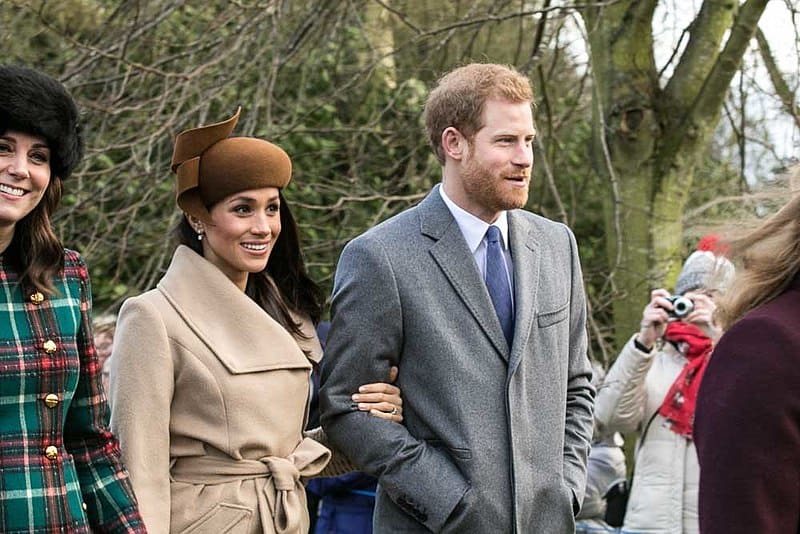
10
MayA Surprise Royal Watcher
 After my one column about space turned into two I did not think I would be writing more anytime soon. However, when I discovered my colleagues did not share my level of excitement over the upcoming royal nuptials I knew I had found something else to write about. For those of you who attended our “Real Hollywood Royalty” film series featuring Grace Kelly (m. Prince Rainier III of Monaco) and Rita Hayworth (m. Prince Aly Kahn), I hope you enjoyed my attempt to build excitement for when American actress Meghan Markle marries Prince Harry on May 19.
After my one column about space turned into two I did not think I would be writing more anytime soon. However, when I discovered my colleagues did not share my level of excitement over the upcoming royal nuptials I knew I had found something else to write about. For those of you who attended our “Real Hollywood Royalty” film series featuring Grace Kelly (m. Prince Rainier III of Monaco) and Rita Hayworth (m. Prince Aly Kahn), I hope you enjoyed my attempt to build excitement for when American actress Meghan Markle marries Prince Harry on May 19.
As a child I was fascinated by Queen Victoria because we shared a first name. She was my go to option for any assignment on a historical figure where she could be made to fit the requirements. Given that interest in the British royal family, the marriage of Prince Charles and Lady Diana Spencer in 1981 was very exciting for nine year old me. It came as no surprise, to my mother at least, that I wanted to get up early enough to not only see the 11:20 am BST ceremony (6:20 am EDT) but also the procession to St. Paul’s and guests entering the Cathedral. Fortunately it was summer so I didn’t need to worry about missing school, but I never voluntarily got up that early! Like many young girls I was taken with Princess Diana’s seemingly fairy tale marriage and so impressed by the spectacle that I decided I would require female guests to wear hats when I got married. I outgrew that fascination before I got married, much to the relief of my female relatives and friends, though not until after I graduated from college.
Of course I was excited to read about the births of Prince William in 1982 and Prince Harry in 1984. The 1996 divorce of the Prince and Princess of Wales four years after their separation made it clear the marriage was not a fairy tale. 4 am EDT was too early for me to watch the entire thing live but I did get up early to watch part of the funeral of Princess Diana after her tragic death in 1997. The 2006 film The Queen depicts the royal family’s response to this event.
When Sarah Ferguson married Prince Andrew in 1986 I was a teenager and we had a VCR so I had my dad record it and watched it at a more reasonable time of day. I had not been at my first professional job for very long when Prince Edward got married, and for some reason wasn’t very interested anyway.
When the engagement of Prince William and Kate Middleton was announced in 2010, my previous workplace had some lunchtime conversations about reusing an engagement ring from a wedding that ended so unhappily. The general consensus was that we’d be happy to have to such a beautiful piece of jewelry, but not as an engagement ring. In the months leading up to the wedding, whenever I was in a waiting room I devoured People, Us Weekly, and the like for photos of the couple and information about their wedding plans. I took the day of the wedding off so I could watch it on TV. Although I watched the repeat broadcast rather than the live version, I was up early making British scones and cakes to eat with my friend who came to watch it with me. I was not alone in having a wedding watching party. In fact, serious royals fans would consider me an amateur since I didn’t watch it live and we didn’t dress up or wear hats. I did get some awesome swag though: a commemorative tea tin and china mug. The births of their children has also been exciting and I eagerly awaited the arrival and naming of Prince Louis last month.
While I’m sure there are many people who will find it easier to watch Prince Harry and Meghan Markle’s wedding on a Saturday, I would prefer a workday since my family would be busy at school and work leaving the TV, and my time, free for binge watching the wedding. My understanding is the British would have preferred a work day as well so they could get a Bank Holiday. Unfortunately my friend who watched the 2011 wedding with me will be working, and my other potential watching partners live elsewhere, so I probably won’t spend much time creating a special menu just for me.
I was too young to pore over gossip magazines when Princes Charles and Andrew got married and am not a committed reader of them now, but if you are, Morrill Memorial Library’s Flipster app gives you access to several of them. I prefer to look at a few blogs that follow the royal family. My favorite is written by Heather Cocks and Jessica Morgan. Each week they do a “Royals Round-Up” with links to articles about and photos of European royals from the preceding week. When the Duke and Duchess of Cambridge travel, the site often has daily posts with photos from the trip. The two also wrote book The Royal We about an American who goes to college in England where she falls in love with the heir to the British throne. What Kate Wore has fashion coverage of the Duchess of Cambridge and an offshoot called What Kate’s Kids Wore has information about what the young princes and princess wear. Meghan’s Mirror covers Ms. Markle’s style including an entire page about her handbags (a weakness of mine).
I know some of my coworkers were surprised to learn just how interested I am in the British royals. I am clearly not a slave to fashion, do not watch reality TV shows, and generally have very little interest in celebrities. The truth is I love some of the fashion worn by the Duchess of Cambridge and Miss Markle but my practical nature means that even their off the rack styles aren’t likely to be found in my closet since my lifestyle doesn’t call for cocktail dresses or high heels. But now you know I’ll be glued to the TV next Saturday morning!
Victoria Andrilenas is an Adult and Information Services Librarian at the Morrill Memorial Library in Norwood, MA. Look for Victoria’s column in the May 10th edition of the Norwood Transcript & Bulletin.
